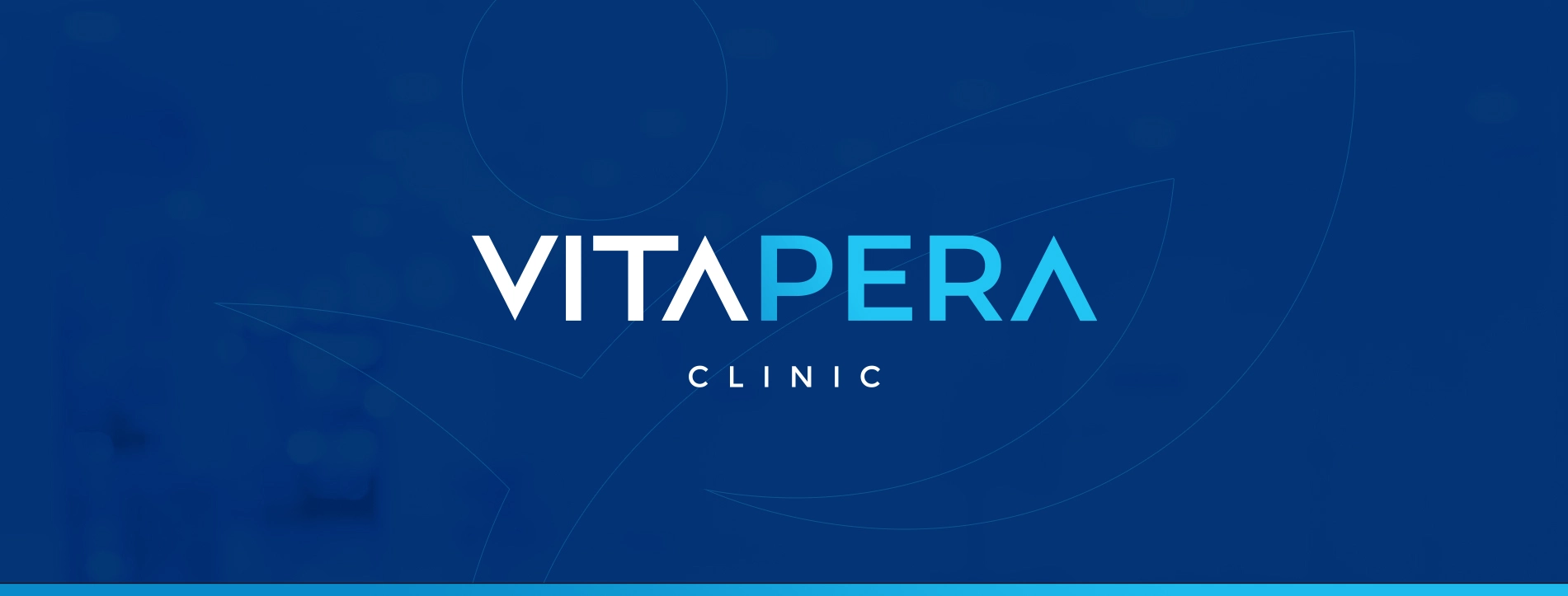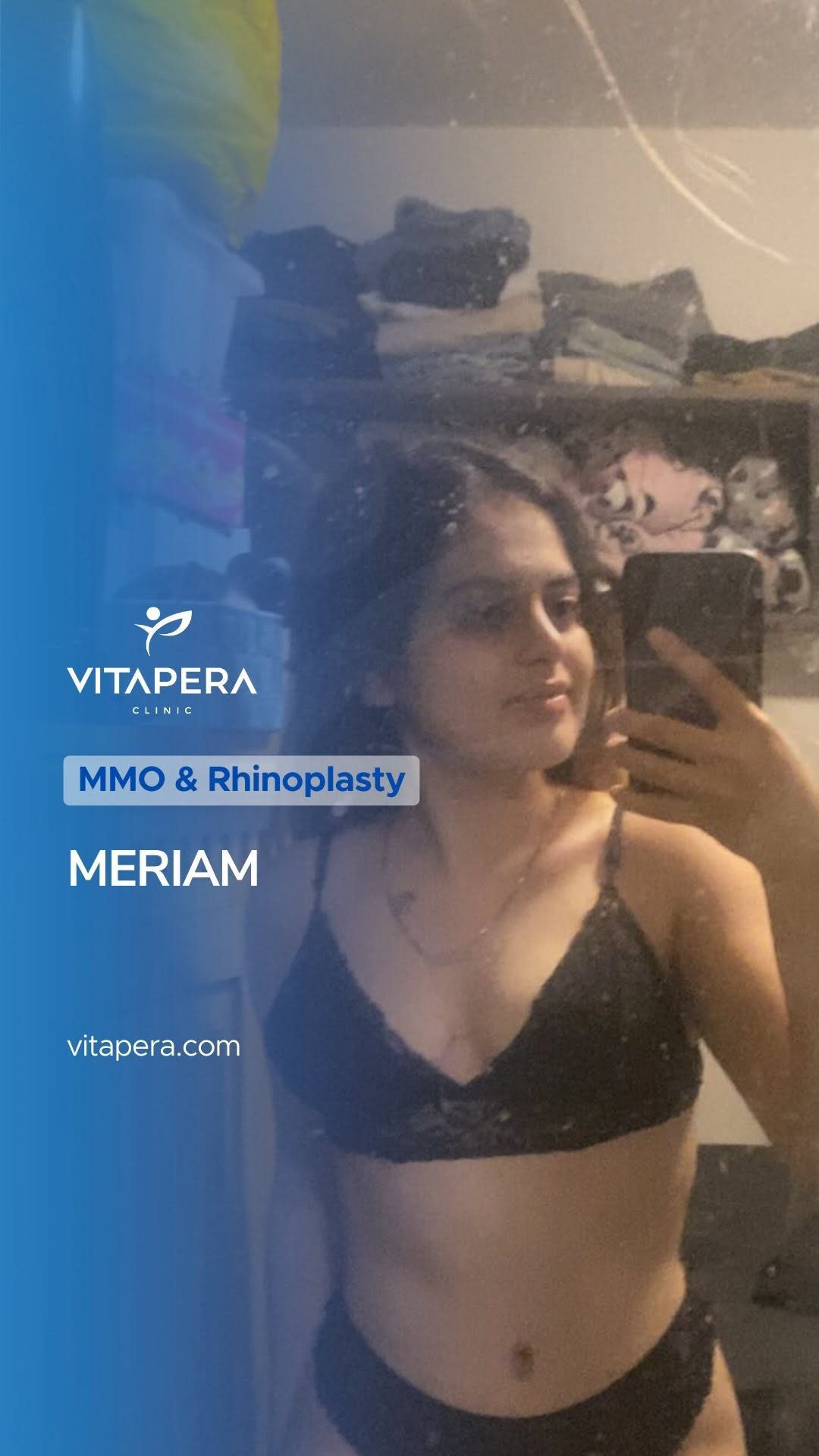For patients preparing for or recovering from body-contouring surgery (liposuction, tummy tuck, “mommy makeover” or similar), a smart diet is key to reaching your goals. In particular, visceral fat – the deep belly fat that wraps around organs – is best targeted through nutrition and exercise, since cosmetic surgery typically removes only subcutaneous fat (the pinchable fat under the skin). Studies show that diet and exercise can trim visceral fat even if body weight doesn’t change much. A diet focused on high-quality protein is especially helpful.
Protein supports muscle mass and metabolism (so your body burns more fat), and it also fuels wound healing after surgery. In this guide, we’ll explain how protein works, summarize US and UK protein intake guidelines, and walk through sample meal plans (omnivore and plant-based) that use protein to reduce visceral fat and promote recovery. We’ll also highlight actionable tips from top health authorities in the US and UK.
Understanding Visceral Fat and Surgical Procedures
Visceral fat is the fat stored deep in the abdominal cavity, surrounding organs like the liver, pancreas and intestines. Unlike subcutaneous fat (the fat just under the skin), visceral fat is hidden and hormonally active: it releases inflammatory compounds and hormones that can raise the risk of diabetes, heart disease and other chronic conditions. Crucially, liposuction and tummy tucks do not remove visceral fat. For example, liposuction “doesn’t reach inside the abdominal wall”, so any deep fat remains in place. In fact, studies find that even without weight loss, visceral fat is more readily burned by diet and exercise than subcutaneous fat. In plain terms, if you want a flatter, healthier waist long-term, your diet and lifestyle must take care of visceral fat.
Visceral fat is strongly influenced by diet: excess sugar, refined carbs and sedentary habits tend to deposit belly fat, while a balanced diet plus regular activity help shrink it. After surgery (tummy tuck, liposuction, or a “mommy makeover” combining multiple procedures), many patients discover that tightening up their diet is crucial to maintain results. A high-protein diet can pull double duty by aiding fat loss and supporting your body’s recovery. Not only does protein make you feel full and help preserve muscle (which keeps metabolism high), it is the building material your body needs to heal wounds and build new tissues after surgery. We’ll explore these roles next.
Why Protein Helps: Fat Loss and Healing
Protein for Fat Loss. Eating a higher-protein diet can directly help reduce body fat, especially the dangerous visceral fat. Protein has a “thermogenic” effect (you burn more calories digesting it), and it curbs appetite, both of which lead to fat loss. In fact, clinical studies confirm that diets higher in protein lead to bigger drops in abdominal and visceral fat, even when calories are matched. For example, a trial in Scientific Reports found that adding protein supplements to a mild diet led to significantly greater loss of visceral fat compared to a normal-protein diet. In practice, this means swapping some carbs or fats for protein-rich foods (lean meats, fish, eggs, dairy, beans, etc.) can tip the scales toward fat burning. Citing dietitian experts, notes that a high-protein diet “contributes to higher muscle mass and reduced body fat” – both of which boost metabolism.
- Satiety: Protein keeps you feeling full longer. This naturally lowers total calorie intake, helping you lose fat.
- Muscle Preservation: When dieting, protein protects your muscle tissue. Maintaining muscle means your body continues burning calories efficiently – including burning more visceral fat.
- Hormonal Balance: Protein stabilizes blood sugar and hunger hormones, preventing insulin spikes and cravings that drive belly fat accumulation.
By contrast, diets high in simple sugars and processed carbs tend to promote visceral fat storage. Harvard Health specifically warns to “avoid products that encourage belly fat deposition, especially simple sugars like fructose-sweetened foods and beverages”. In short, choose whole foods and ample protein, and cut back on sweets and refined carbs.
Protein for Recovery and Tissue Repair. After surgery, your body essentially needs to rebuild tissue. Protein is fundamental to that process. Every cell, muscle fiber and new layer of skin is made of protein, so a deficiency slows healing. Health authorities are emphatic: the UK’s Royal National Orthopaedic Hospital advises that “After surgery or when recovering from an infection, your body uses up a lot more energy and protein than normal to help repair itself”. If you don’t eat enough protein, your body will even break down your existing muscle (arms, legs, even heart muscle) to harvest amino acids for healing.
Guidelines for surgical patients typically recommend boosting protein intake. A patient education sheet from Northwestern Medicine explains that you should eat a high-protein diet starting weeks before surgery to “give your body the fuel it needs to heal after surgery.” It specifically states: “Protein is a nutrient needed for normal growth, wound healing and fighting infections. If you are not eating enough protein, it will be harder for your skin to heal.”. Similarly, the American Society of Plastic Surgeons (ASPS) emphasizes that “it’s essential to stick to foods that are high in protein… increasing both calories and protein is essential for proper wound healing”. Protein helps rebuild connective tissue (collagen), regenerates skin cells at the incision sites, and supports immune function to stave off infections.
Key roles of protein after surgery include:
- Wound Healing: Proteins form collagen and new skin. Surgeons often advise high-protein foods to speed recovery and improve scar healing.
- Muscle Maintenance: Healing burns calories and can cause muscle breakdown if nutrition is poor. Adequate protein prevents loss of muscle mass (which you need for strength and movement).
- Immune Support: Antibodies and many immune cells are protein-based. Higher protein helps fight infection and inflammation.
In practice, patients recovering from procedures should aim for more than the basic recommended protein. Many sources suggest at least 1.0–1.2 grams per kg of body weight, and sometimes as high as 1.5–2.0 g/kg for optimal healing. The British Heart Foundation notes that older adults (who often heal slower) need about 1.0–1.2 g/kg to preserve muscle and heal. For example, a 70-kg adult might aim for 70–84 grams of protein daily. (If you’re pregnant or breastfeeding while also recovering, needs could be even higher.) In all cases, the NHS warns that regularly eating more than 2 g/kg per day of protein can strain the kidneys, so extremely high intakes should be monitored.
Dietary Protein Guidelines: US vs UK Benchmarks
How does this translate to everyday targets? Official recommendations give a baseline, but remember that you may need more during recovery or when losing fat. In the US, the National Institutes of Health sets the Recommended Dietary Allowance (RDA) for protein at 0.8 g per kg body weight. That works out to about 46 grams per day for an average woman and 56 grams for an average man. This is considered the minimum to meet basic physiological needs for a healthy adult, not an optimum for body re composition or healing. In practice, many Americans already exceed this; CDC data show average intakes of ~70 g for women and ~102 g for men, reflecting activity and muscle-building diets.
In the UK, guidelines are quite similar. The British Heart Foundation cites the UK recommendation of 0.75 g per kg, roughly 45 g for a 60-kg woman and 55 g for a 75-kg man. These figures align closely with the US. Both countries’ guidelines note that protein requirements vary: more active people, older adults, or surgical patients often benefit from 1.0–1.2 g/kg or more. For example, UK advice is to distribute protein evenly (about 20–25 g) at each meal to maximize muscle repair.
To summarize, aim for at least the RDA (roughly 50–60 g/day for many adults) as a floor. Then consider bumping it up: a general high-protein goal might be 20–30% of your total calories from protein, or about 1.2–1.5 g/kg body weight if you’re active or in recovery. Dietitians often recommend roughly 20–30 grams of high-quality protein at each meal. We’ll see sample meal plans shortly that hit those marks.
Note: If you have kidney disease, please follow your doctor’s guidance on protein intake.
Picking the Right Proteins and Other Foods
What qualifies as a “protein-rich” food? Both US and UK nutrition experts emphasize lean, whole-food sources. The NHS’s Eatwell Guide and RNOH’s surgery guide recommend:
- Animal proteins: Lean meat (chicken, turkey), fish (especially oily fish like salmon or sardines for omega-3s), eggs, and low-fat dairy (milk, yogurt, cheese). These provide complete amino acids (all the building blocks) plus nutrients like iron, B12, and calcium.
- Plant proteins: Beans, lentils, chickpeas, peas, tofu/soya products, nuts and seeds. These often come with fiber and phytonutrients. Combining different plant proteins (e.g., rice and beans) ensures you get all essential amino acids. UK sources specifically list “soya/tofu, beans, lentils and nuts” as excellent choices. For vegetarians and vegans, protein-rich dairy (Greek yogurt, cottage cheese) or alternatives (soy yogurts, nut butters) also help.
- Protein supplements/shakes (optional): If you struggle to get enough from food (due to appetite loss after surgery, dietary restrictions, etc.), a protein powder (whey, pea, soy protein) or high-protein meal replacement can fill gaps. However, whole foods are preferred for overall nutrition.
Alongside protein, a balanced diet for visceral fat loss should emphasize:
- Vegetables and fruits: For fiber, antioxidants, vitamins (especially vitamin C for healing) and minerals (zinc, iron) that aid recovery. The NHS notes vitamin C and zinc specifically help wound healing. Aim for plenty of leafy greens, berries, colorful fruits and veggies each day.
- Whole grains or starchy carbs: Wholegrain bread, brown rice, oats and quinoa provide fiber and energy. While eating high protein, don’t eliminate carbs entirely. We need some carbs for energy, especially to fuel a healing body. Just favor whole grains over refined ones.
- Healthy fats: Foods like avocados, nuts, olive oil and fatty fish (salmon, mackerel) provide essential fats and omega-3s, which have anti-inflammatory properties. These support heart health and may further help reduce visceral fat (since omega-3s are known to improve metabolism).
- Plenty of water: Hydration is crucial for healing. Water helps transport nutrients, form new tissue, and prevent complications. Many post-op guides (and doctors) stress 1.5–2 liters of fluid a day, even more if you have drains or are nursing. Herbal teas or broths can count too.
Finally, it’s wise to limit sugar, alcohol and processed foods. Added sugars and empty calories can quickly undo weight-loss efforts and promote fat storage. Harvard and dietitians advise avoiding sugary drinks and snacks, as these “encourage belly fat deposition”. Smoking should be avoided (impairs healing) and, if you drink alcohol, keep it minimal: alcohol calories add up and alcohol can increase appetite and fat around the liver.
Lifestyle: Exercise and Other Factors
While this guide focuses on diet, remember that exercise and sleep play big roles too. Regular physical activity – a mix of cardio (walking, jogging, cycling) and strength training – helps burn visceral fat and build the muscle that protein supports. Even after surgery, doctors usually encourage gentle movement (like walking) as soon as safely possible to boost circulation and prevent complications. Over time, returning to weight-bearing exercise will make the high-protein diet even more effective for body composition.
Quality sleep and stress management matter as well: poor sleep and chronic stress raise cortisol, which can increase visceral fat. Good sleep (7–9 hours) and stress reduction (meditation, yoga, hobbies) complement dietary efforts.
With these principles in mind, let’s look at some sample meal plans that pack in protein for both omnivores and plant-based eaters. Each plan is designed to hit protein goals and support fat loss and healing. You can adjust portion sizes and swaps as needed for personal taste, but the overall structure and emphasis on protein and whole foods should remain.
Sample Meal Plan 1: Balanced High-Protein Omnivore Diet
A balanced high-protein diet includes lean meats, fish, eggs and dairy at each meal, along with vegetables, whole grains and healthy fats. Here’s what a day might look like, roughly aiming for 25–30g of protein per meal:
- Breakfast: Omelet made with 2–3 egg whites (or 1 whole egg + 2 whites) plus spinach, tomatoes and mushrooms. Serve with a slice of whole-grain toast or half a small avocado toast. Add a side of Greek yogurt (about 6 oz) with fresh berries.
- Lunch: Grilled chicken breast (around 100–120 g, roughly palm-sized) atop a large mixed salad (greens, peppers, cucumber, carrots) dressed with olive oil and vinegar. Include half a cup of quinoa or brown rice on the side for extra fiber.
- Snack (afternoon): A handful of mixed nuts or a protein-rich snack bar, or cottage cheese with sliced fruit.
- Dinner: Baked or steamed fish fillet (e.g. salmon or cod, 120–150 g) or lean turkey/chicken. Serve with a generous portion of roasted vegetables (broccoli, cauliflower, Brussels sprouts, etc.) and a moderate serving of sweet potato or brown rice. Drizzle with olive oil or add a sprinkle of grated cheese for flavor and healthy fat.
- Evening snack (if hungry): A small smoothie (made with milk or a milk alternative and a scoop of protein powder) or a piece of low-fat cheese with wholegrain crackers.
Structure & Strategy: In this plan, protein comes from both animal and dairy sources (eggs, yogurt, chicken, fish, cheese). The Eatwell Guide style balance is visible: plenty of vegetables and whole grains, moderate lean protein and dairy portions, and healthy fats like olive oil and nuts. Spreading protein evenly (≈20–30g) across meals fits UK advice of ~20g per meal. For example, a 3-egg omelet plus yogurt breakfast easily hits ~25g protein, a chicken-salad lunch provides ~30g, etc.
This diet can be adjusted to around 2000 kcal with roughly 150–180g protein (30–35% of calories) if you add snacks as above. You may adjust portion sizes based on your calorie needs. Key is “lean whenever possible”: choose white-meat poultry, fish, low-fat dairy and trim visible fat from meats. Also rotate protein sources to get a range of nutrients: fish twice a week for omega-3’s (helps reduce inflammation), eggs for choline and vitamin D, dairy for calcium and probiotics, etc.
Benefits: A balanced omnivore diet provides high-quality, complete proteins rich in all essential amino acids. This supports muscle repair and growth – crucial after surgery – and helps maintain muscle as body fat is lost. Animal proteins also supply iron and B12, important for energy and healing. The dietary fats (especially from fish, olive oil, nuts) help absorb fat-soluble vitamins and blunt inflammation around healing wounds. The vegetables, whole grains and fruits ensure plenty of fiber, which aids digestion (important if pain meds slow your gut) and helps manage blood sugar. In short, this plan is muscle-protective, filling, and fosters a calorie deficit for fat loss without hunger. Over time, this balanced approach promotes steady fat loss (including visceral fat) while giving your body the nutrition it needs to heal and stay strong.

Sample Meal Plan 2: Vegetarian Protein-Rich Diet
A vegetarian high-protein plan relies on eggs, dairy and plant foods to meet protein goals, making it suitable for vegetarians or omnivores who want more plant emphasis. A typical day might be:
- Breakfast: Greek yogurt (around 200–250g) with mixed nuts and seeds (almonds, walnuts, chia) and berries on top. Or scrambled eggs (2 whole eggs) with a handful of spinach and a sprinkle of cheese, plus whole-grain toast.
- Lunch: Large salad or grain bowl with mixed beans and lentils (e.g. chickpeas, black beans, lentils – about 1 cup total). Add feta or tofu cubes, cherry tomatoes, cucumber, olives and a tahini or vinaigrette dressing. Include a hard-boiled egg or avocado for extra protein/fat. Optionally, have some wholegrain crackers or a small pita on the side.
- Snack (afternoon): A smoothie made with milk or fortified soy milk, spinach, half a banana, and a scoop of protein powder (or nut butter) – or simply a protein bar or cottage cheese with fruit.
- Dinner: Lentil or bean-based curry/stew (e.g. lentil dahl, chickpea curry, or a bean chili). Serve over quinoa or brown rice. Add a side of steamed vegetables or a salad. Top with low-fat yogurt or grated cheese if desired.
- Evening snack: Slices of cheese or boiled eggs with wholegrain crackers, or hummus with veggie sticks.
Structure & Strategy: This diet emphasizes plant proteins + dairy. Legumes (beans, lentils, peas) are the star protein source – they provide around 15–18g protein per cooked cup. Dairy (yogurt, cheese) and eggs fill out the rest. Aiming for ~25g per meal, a bowl of yogurt + nuts breakfast can hit that mark, beans-and-egg salad at lunch, and a lentil-based dinner. UK guidelines note that vegetarian proteins like beans, pulses and nuts should be included for their protein, fiber and nutrients.
Portion wise: keep meals balanced: the Eatwell pattern still applies – half the plate veggies/fruit, 1/4 whole grains, 1/4 protein-rich foods (here, beans/eggs/cheese). Spread pulses across meals (e.g., lentils at dinner, beans at lunch). Many vegetarians find it helpful to include eggs or dairy at least a few times a week to easily reach protein goals. But even a fully vegetarian (no meat/fish) plan can meet protein needs with smart combos.
Benefits: A vegetarian high-protein diet brings extra fiber, antioxidants and micronutrients compared to meat-heavy diets. High fiber helps you feel full and also specifically aids fat loss by improving insulin sensitivity. Many plant proteins (beans, greens) have anti-inflammatory effects, which is great for recovery. You also get plant sterols and phytonutrients that support heart health. Protein-rich vegetables and pulses are lower in saturated fat than most meats, which benefits long-term cardiovascular risk.
However, one must be mindful of a couple of nutrients: iron and B12. Plant-based iron (beans, spinach) is less absorbable, so it helps to pair it with vitamin C sources (peppers, citrus) in the same meal. Vitamin B12 comes naturally only from animal foods, so if you’re strictly vegetarian (no eggs/dairy), consider fortified foods or a B12 supplement. Dairy and eggs provide both calcium and B12, making lacto-ovo diets easier on those fronts.
Overall, this vegetarian plan supplies robust protein while being gentle on the joints (less inflammation) and heart. It’s rich in vitamins C, K, magnesium and folate (from greens and legumes) – all important for collagen formation and healing. Many people find plant-heavy diets naturally lower in calories (due to fiber) and very filling. As long as you ensure enough total calories (with healthy carbs/fats) and variety, this diet will support fat loss, healing, and long-term health.
Sample Meal Plan 3: Vegan Protein-Powered Diet
For those avoiding all animal products, a vegan high-protein diet can still provide plenty of protein by focusing on legumes, soy, nuts and seeds. Here’s a sample day:
- Breakfast: Tofu scramble (crumbled firm tofu sautéed with turmeric, onions, peppers, spinach) seasoned with nutritional yeast and served with whole-grain toast. Alternatively, a vegan protein shake with pea protein or soy milk, a scoop of plant protein powder, peanut butter and fruit.
- Lunch: Buddha bowl with quinoa (high in protein), roasted chickpeas or tempeh chunks, mixed vegetables (broccoli, kale, carrots), and a sesame-ginger dressing. Top with a sprinkle of hemp seeds or pumpkin seeds for extra protein and healthy fats.
- Snack: A handful of roasted soy nuts or peanuts, or edamame pods, or an energy bar made with nuts and pea/soy protein. Another option: wholegrain toast with peanut butter and sliced banana.
- Dinner: Stir-fried tofu/tempeh with a variety of vegetables (bell peppers, snow peas, mushrooms) in a savory sauce. Serve over brown rice or buckwheat noodles. You could also try a vegan chili with mixed beans (kidney, black beans, lentils) and sweet potato.
- Evening snack: A small bowl of fortified oatmeal or chia pudding (made with soy or almond milk), or a smoothie with silken tofu and berries.
Structure & Strategy: This plan uses only plant-based proteins. Key staples are soy products (tofu, tempeh, edamame), beans/pulses, seitan (wheat gluten), and pseudo-grains like quinoa and buckwheat (which contain more protein than rice). Seeds and nuts provide concentrated protein (and fats). Aiming for about 25g protein per meal is tougher on vegan diets, but doable by combining multiple sources. For example, a breakfast tofu scramble (100g tofu ~10g protein) plus seeds and toast can reach ~20g. Lunch with tempeh (100g ~19g protein) plus quinoa (1 cup ~8g) exceeds 25g.
To maximize nutrition: include fortified foods or supplements for nutrients often low in vegan diets. Vitamin B12 (fortified plant milks, nutritional yeast), iodine (iodized salt, seaweed), and vitamin D (fortified foods, sunlight) should be on your radar. Legumes and grains cover most needs, but it helps to rotate them so you get different amino acid profiles. Also, soak or sprout beans/seeds to improve digestibility and nutrient absorption.
Benefits: A well-planned vegan high-protein diet can be excellent for cutting visceral fat. Plant-based diets are often higher in fiber and phytonutrients than diets with meat, which supports heart health and reduces inflammation. Vegans typically have lower blood pressure and lower cholesterol, outcomes linked to the abundance of whole plant foods. Despite common myths, athletes and active people can build muscle on vegan diets – as long as total protein is sufficient. The “meat” analogs (tofu, seitan) and legume combos ensure you get all essential amino acids.
This diet will also tend to be naturally antioxidant-rich (colors of fruits/veggies), which helps deal with oxidative stress from surgery. On the flip side, be mindful of calories: plant foods are often less calorie-dense than animal products, so you may need larger portions or healthy snacks to meet energy needs during recovery. Nuts, seeds, and whole grains are your friends here.
Overall, a vegan plan removes dietary cholesterol and saturated fat from animal products (potentially aiding heart health), while delivering the protein needed for repair. Since ASPS surgeons advise focusing on whole, anti-inflammatory foods, this plant-based approach lines up well with professional guidance. It emphasizes “foods grown on plants,” limiting processed items, which not only helps recovery but also long-term body composition.
Tips for Success and Long-Term Support
Here are some additional practical tips to make a protein-focused diet work for you:
- Spread protein evenly: Try to include a source of protein at every meal and snack. This steady supply helps continuous repair and prevents muscle breakdown. The British Heart Foundation recommends about 20–25g per meal, which is a useful rule-of-thumb. A palm-sized portion of meat or fish, one cup of dairy or beans, or two eggs is roughly in that range.
- Leverage planning and prep: Busy schedules or post-surgery grogginess can make meal prep hard. Consider batch-cooking proteins (grilling a batch of chicken, boiling eggs, cooking lentils) in advance, so meals are quick. Keep easy snacks on hand (hard-boiled eggs, yogurt pots, protein shakes, mixed nuts, protein bars).
- Choose whole foods over supplements: Whenever possible, get protein from whole foods which also provide vitamins and minerals. However, a protein shake (whey, soy, pea) can be a convenient supplement if appetite is low. For example, a glass of milk or soy milk plus a scoop of protein powder can add 20–30g in one go.
- Balance calories: Even high-protein diets cause fat loss only if you maintain a calorie deficit (or at least avoid excess). Monitor portion sizes of carbs and fats. Use non-starchy veggies to bulk up meals without many calories. But don’t over-restrict – cutting calories too much can impair healing. Focus on nutrient density: a modest deficit of 300–500 calories per day generally yields safe fat loss.
- Stay hydrated: Water is crucial. Drink plenty through the day – hydration aids every bodily function, from metabolic fat-burning to keeping skin supple. Aim for at least 6–8 cups of fluid (water, tea, broth) daily, more if you exercise or have drains.
- Limit “empty” calories: Cut back on sugary drinks, excessive alcohol, and highly processed snacks. These add calories without nutrition and can drive up visceral fat. Replace sweets with naturally sweet fruits, and sodas with flavored water or herbal tea.
- Follow medical advice: Adhere to any specific instructions from your surgeon or nutritionist. For instance, many recommend stopping certain supplements (like high-dose vitamin E, fish oil, or herbal supplements) before surgery because they thin the blood. Also, some medicines or recovery programs come with tailored diet plans – use them as additional guidance.
- Listen to your body: Especially after surgery, appetite and energy will fluctuate. It’s normal to feel less hungry initially. In that phase, focus on protein-rich liquids (broths, smoothies, milky cereals) and small frequent meals. As strength returns, you can resume solid meals. Always stop dieting if your healthcare provider advises more calories for health.
Finally, aim for a sustainable, enjoyable approach. A diet for fat loss and recovery shouldn’t feel like punishment. Incorporate flavors and foods you love, within the high-protein framework. The British Heart Foundation reminds us to include protein sources that you enjoy and can maintain long-term. Think of nutrition as part of a new healthy lifestyle. Over weeks and months, these habits – coupled with exercise – will help melt away visceral fat and leave your body stronger after surgery.
Putting It All Together
A protein-focused diet is a powerful tool for anyone targeting visceral fat and healing after cosmetic body procedures. By choosing lean proteins, plenty of veggies, whole grains and healthy fats, you support both body composition goals and surgical recovery. As shown by research and expert guidance, higher protein intake helps reduce abdominal fat and promotes tissue repair. Whether you follow a meat-inclusive plan or a vegetarian/vegan one, the key is consistency: eat balanced meals every few hours, stay active, and give your body the nutrients it needs to rebuild.
Remember that American and British health guidelines agree on the basics: adults need roughly 45–60 grams of protein daily as a baseline, and higher amounts (around 20–30% of calories) are advised for athletic or healing individuals. By meeting or exceeding those levels with high-quality food sources, you can make the most of your cosmetic procedure. This isn’t about a quick fix – there’s no magic bullet for belly fat – but it is about setting up healthy habits that deliver smoother healing and a trimmer waistline over time.










